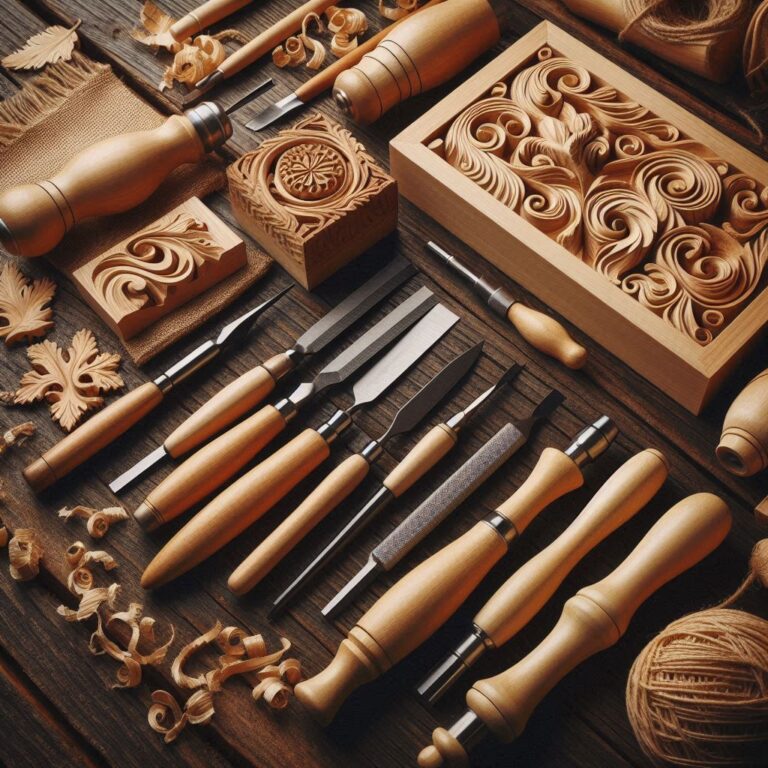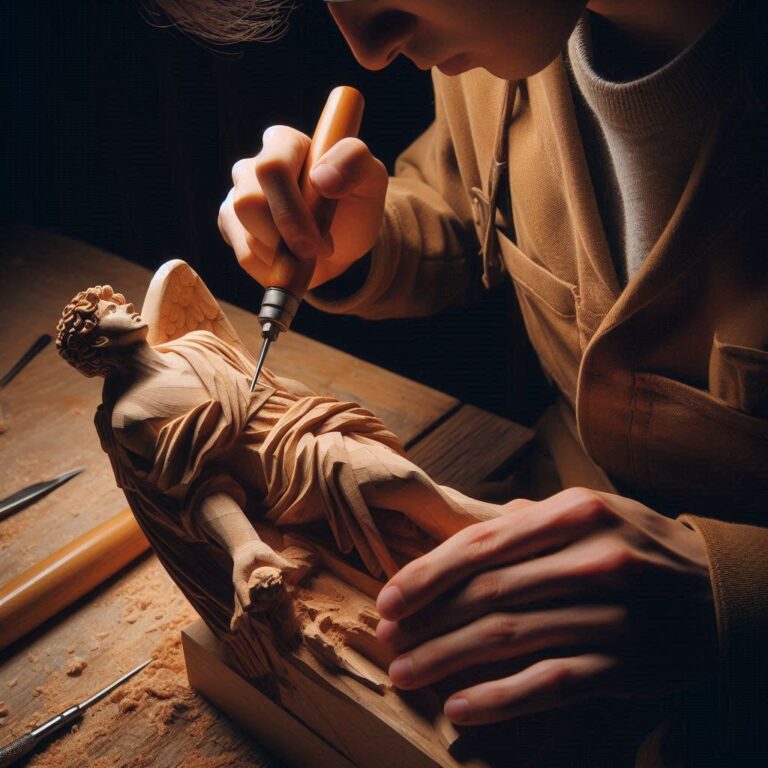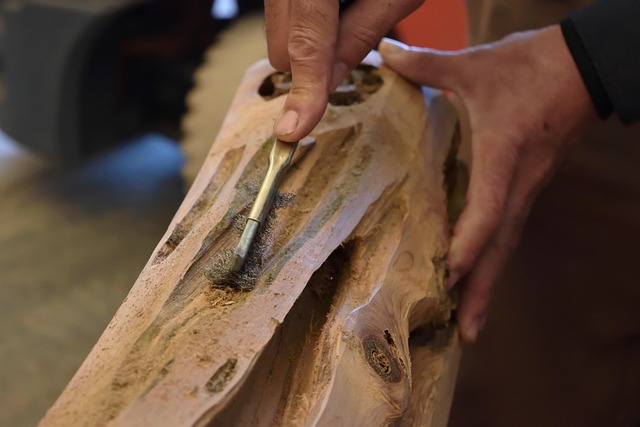Discover the Essential Tools and Techniques for Your Wood Carving Journey
The Ultimate Guide to Choosing the Best Wood Carving Kit: Tools, Techniques, and Tips for Beginners
Ever wondered how artisans create stunning wooden sculptures with intricate details? The secret lies in having the right wood carving kit! Whether you’re a beginner looking to start a new hobby or an experienced carver refining your skills, the right set of tools makes all the difference.
In this guide, we’ll explore everything you need to know about wood carving kits—what they include, the best wood for carving, essential techniques, safety tips, and even beginner-friendly projects. By the end, you’ll be equipped with the knowledge to choose the perfect kit and start carving with confidence!
Introduction to Wood Carving Kits
Wood carving is an ancient art form that has fascinated many. With a wood carving kit, even beginners can create beautiful pieces. These kits offer all the tools needed to start carving right away. Let’s dive into the basics and benefits of using these kits.
Basics of Wood Carving
Wood carving involves shaping wood using various tools. Common tools include knives, chisels, and gouges. Each tool has a specific purpose and helps achieve different shapes and textures.
- Knives: Used for detailed and intricate cuts.
- Chisels: Ideal for removing larger wood pieces.
- Gouges: Perfect for creating curves and hollows.
Choosing the right wood is also crucial. Softwoods like basswood are great for beginners as they are easier to carve and less likely to splinter.
Benefits of Using a Kit
A wood carving kit offers several advantages:
- All-in-One: Kits include all essential tools, reducing the need for multiple purchases.
- Cost-Effective: Buying a kit is often cheaper than buying tools separately.
- Convenience: Everything you need is in one place, making it easier to start carving.
Using a kit ensures that you have the right tools for each task, making the carving process smoother and more enjoyable.
Essential Tools in a Wood Carving Kit
A wood carving kit offers the essential tools for crafting beautiful pieces. These tools help transform raw wood into stunning art. Let’s explore the key tools every wood carving kit should include.
Knives and Gouges
Knives and gouges are the cornerstone of any wood carving kit. Each tool serves a unique purpose, ensuring versatility in your carving tasks.
- Carving Knives: Ideal for whittling and detailed carving.
- Detail Knives: Used for intricate work and fine lines.
- Gouges: Perfect for scooping out material and creating hollows.
- V-tools: Excellent for adding texture and fine details.
Having a variety of knives and gouges ensures you can handle any carving project with precision and ease.

Sharpening Tools
Keeping your tools sharp is crucial for effective wood carving. Sharpening tools maintain the edge on your knives and gouges.
- Sharpening Stones: Used to grind and hone the blade edge.
- Strops: Leather strips for polishing and refining the blade.
- Honing Guides: Ensure a consistent angle while sharpening.
- Sharpening Compounds: Abrasive materials applied to strops for extra sharpness.
Regular sharpening prevents dull blades, ensuring clean and smooth cuts. A sharp tool improves control and reduces the risk of accidents.
Choosing the Right Wood
The type of wood you use will affect your carving experience and the final product. Understanding different wood types, as well as their grain and texture, can help you make the best choice for your project.
Types of Wood for Carving
Different woods offer different qualities for carving. Here are some popular choices:
Wood Type | Grain | Texture | Best For |
Basswood | Fine | Soft | Beginners, detailed work |
Butternut | Coarse | Soft | Similar to basswood but richer in color |
Walnut | Fine | Hard | Advanced carvings, durable projects |
Cherry | Fine | Hard | Detailed work, fine finishing |
Oak | Coarse | Hard | Large projects, durability |
Fine-grained woods are good for detailed work, while coarse-grained woods are better for larger, simpler projects.
Basic Carving Techniques
Wood carving is a timeless art that starts with basic techniques. These techniques include whittling and chip carving. Let’s explore them in detail.
Whittling
Whittling is the simplest form of wood carving. It involves carving small pieces from a larger block. This technique uses a whittling knife, which should be sharp and comfortable to hold.
Steps to start whittling:
- Choose a softwood like basswood.
- Hold the wood securely in one hand.
- Use the knife to make small, controlled cuts.
- Always carve away from your body.

Chip Carving
Chip carving involves removing small chips of wood to create intricate designs. This technique uses a chip carving knife or a chisel.
Steps for chip carving:
- Select a flat piece of wood.
- Draw your design on the wood.
- Make small, triangular cuts along the design.
- Remove the chips carefully.
Both whittling and chip carving are rewarding and great starting points for any wood carving journey.
Advanced Carving Methods
Once you master the basics, you can explore advanced techniques like relief carving and carving in the round.
Relief Carving
Relief carving involves carving figures that stand out from a flat background. This method adds depth and dimension to your work.
Tools Needed for Relief Carving:
Tool | Purpose |
Gouges | Used for scooping out wood. |
V-tools | Perfect for outlining. |
Chisels | For cutting and smoothing surfaces. |
Carving in the Round
Carving in the round involves creating fully three-dimensional figures. This method brings your wood pieces to life.
- Choose a softwood like basswood.
- Sketch your design on the wood.
- Use gouges to remove large chunks.
- Switch to smaller tools for details.
- Sand the final piece for a smooth finish.
Safety Tips for Wood Carving
Wood carving is fun and creative, but safety is crucial. Follow these tips:
- Keep tools sharp: Dull tools can slip and cause injuries.
- Carve away from your body: Prevent accidental cuts.
- Wear protective gear: Gloves, safety goggles, and a dust mask keep you safe.
Gear | Protection |
Gloves | Protect hands from cuts |
Safety Goggles | Protect eyes from wood chips |
Dust Mask | Prevents inhaling wood dust |
Conclusion
A wood carving kit opens up a world of creativity. Whether you’re a beginner or an expert, having the right tools ensures better results and a more enjoyable experience.
🔥 Ready to start carving? Get a high-quality wood carving kit today and bring your ideas to life!

